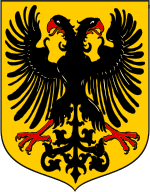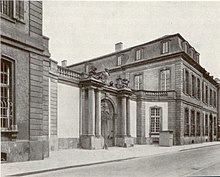
The German Confederation was an association of 39 predominantly German-speaking sovereign states in Central Europe. It was created by the Congress of Vienna in 1815 as a replacement of the former Holy Roman Empire, which had been dissolved in 1806 in reaction to the Napoleonic Wars.

The capital of Germany is the City Land of Berlin. It is the seat of the Federal President of Germany, whose official residence is Bellevue Castle. The Federal Council is the representation of the Lands of Germany and has its seat at the former Prussian House of Lords. Though most of the ministries are seated in Berlin, some of them, as well as some minor departments, are seated in Bonn, the former capital of Germany (western). Although Berlin is officially the capital of Germany, 8,000 out of the 18,000 total officials employed at the federal bureaucracy still work in Bonn, about 600 km (370 mi) away from Berlin.

The German Bundesrat is a legislative body that represents the sixteen Länder of Germany at the federal level. The Bundesrat meets at the former Prussian House of Lords in Berlin. Its second seat is located in the former West German capital of Bonn.

The German revolutions of 1848–1849, the opening phase of which was also called the March Revolution, were initially part of the Revolutions of 1848 that broke out in many European countries. They were a series of loosely coordinated protests and rebellions in the states of the German Confederation, including the Austrian Empire. The revolutions, which stressed pan-Germanism, demonstrated popular discontent with the traditional, largely autocratic political structure of the thirty-nine independent states of the Confederation that inherited the German territory of the former Holy Roman Empire after its dismantlement as a result of the Napoleonic Wars. This process began in the mid-1840s.
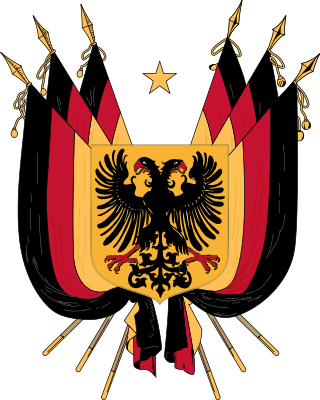
The Frankfurt Parliament was the first freely elected parliament for all German states, including the German-populated areas of the Austrian Empire, elected on 1 May 1848.

Hesse-Homburg was a state of the Holy Roman Empire and a sovereign member of the German Confederation. It was formed into a separate landgraviate in 1622 by the landgrave of Hesse-Darmstadt; it was to be ruled by his son, although it did not become independent of Hesse-Darmstadt until 1668. It was briefly divided into Hesse-Homburg and Hesse-Homburg-Bingenheim; but these parts were reunited in 1681.

A Landtag is generally the legislative assembly or parliament of a federated state or other subnational self-governing entity in German-speaking nations. It is usually a unicameral assembly exercising legislative competence in non-federal matters.

The First Schleswig War, also known as the Schleswig-Holstein Uprising and the Three Years' War, was a military conflict in southern Denmark and northern Germany rooted in the Schleswig-Holstein Question: who should control the Duchies of Schleswig, Holstein and Lauenburg, which at the time were ruled by the king of Denmark in a personal union. Ultimately, the Danish side proved victorious with the diplomatic support of the great powers, especially Britain and Russia, since the duchies were close to an important Baltic seaway connecting both powers.

The coat of arms of Germany displays a black eagle with a red beak, a red tongue and red feet on a golden field, which is blazoned: Or, an eagle displayed sable beaked langued and membered gules. This is the Bundesadler, formerly known as Reichsadler. It is one of the oldest coats of arms in the world, and today the oldest national symbol used in Europe.

The Erfurt Union was a short-lived union of German states under a federation, proposed by the Kingdom of Prussia at Erfurt, for which the Erfurt Union Parliament, officially lasting from March 20 to April 29, 1850, was opened at the former Augustinian monastery in Erfurt. The union never came into effect, and was seriously undermined in the Punctation of Olmütz under immense pressure from the Austrian Empire.
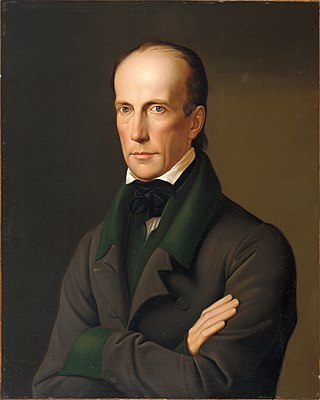
Archduke John of Austria, a member of the House of Habsburg-Lorraine, was an Austrian field marshal and imperial regent (Reichsverweser) of the short-lived German Empire during the Revolutions of 1848.
The Punctation of Olmütz, also called the Agreement of Olmütz, was a treaty between Prussia and Austria, dated 29 November 1850, by which Prussia abandoned the Erfurt Union and accepted the revival of the German Confederation under Austrian leadership. The treaty concluded the Autumn Crisis of 1850 in Germany.
The term "Lesser Germany" or "Lesser German solution" denoted essentially exclusion of the multinational Austria of the Habsburgs from the planned German unification as an option for solving the German question, in opposition to the one of 'Greater Germany'.

The Reichsflotte was the first navy for all of Germany, established by the revolutionary German Empire to provide a naval force in the First Schleswig War against Denmark. The decision was made on 14 June 1848 by the Frankfurt Parliament, which is considered by the modern German Navy as its birthday.

Duchess Therese Mathilde Amalie of Mecklenburg-Strelitz was a member of the House of Mecklenburg-Strelitz and a Duchess of Mecklenburg. Through her marriage to Karl Alexander, 5th Prince of Thurn and Taxis, Therese was also a member of the House of Thurn and Taxis.

The Provisorische Zentralgewalt was the provisional government of the Frankfurt Parliament (1848–49). Since this all-German national assembly had not been initiated by the German Confederation, it was lacking not only major constitutional bodies, such as a head of state and a government, but also legal legitimation. A modification of the Bundesakte, the constitution of the German Confederation, could have brought about such legitimation, but as it would have required the unanimous support of all 38 signatory states this was practically impossible. Partially for this reason, influential European powers such as France and Russia declined to recognize the Parliament. The delegates on the left wanted to solve this situation by creating a revolutionary parliamentary government, but, on 24 June 1848, the majority voted for a compromise, the so-called Provisional Central Power.
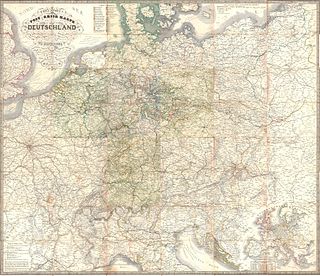
The Thurn-und-Taxis Post was a private postal service and the successor to the Imperial Reichspost of the Holy Roman Empire. The Thurn-und-Taxis Post was operated by the Princely House of Thurn and Taxis between 1806 and 1867. The company was headquartered in Regensburg from its creation in 1806 until 1810 when it relocated to Frankfurt am Main where it remained until 1867.

The German Empire was a proto-state which attempted, but ultimately failed, to unify the German states within the German Confederation to create a German nation-state. It was created in the spring of 1848 during the German revolutions by the Frankfurt National Assembly. The parliament elected Archduke John of Austria as its provisional head of state with the title 'Imperial Regent'. On 28 March 1849, its constitution was implemented and the parliament elected the king of Prussia, Frederick William IV, to be the constitutional monarch of the empire with the title 'Emperor of the Germans'. However, he turned the position down. The empire came to an end in December 1849 when the Central German Government was replaced by a Federal Central Commission.
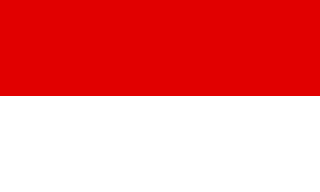
The Electorate of Hesse, also known as Hesse-Kassel or Kurhessen, was a state whose prince was given the right to elect the Emperor by the Imperial diet in 1803. When the Holy Roman Empire was abolished in 1806, its prince, William I, chose to retain the title of Elector, even though there was no longer an Emperor to elect. In 1807, with the Treaties of Tilsit, the area was annexed to the Kingdom of Westphalia, but in 1814, the Congress of Vienna restored the electorate.

The Constitution of the German Confederation, or German Federal Act, was the constitution for the German Confederation as set forth in the Final Act of the Congress of Vienna. Out of the 360 states of the former Holy Roman Empire, it established a confederation of 39 states under the presidency of the Emperor of Austria. In its initial form, the Constitution came into effect on 8 June 1815.
